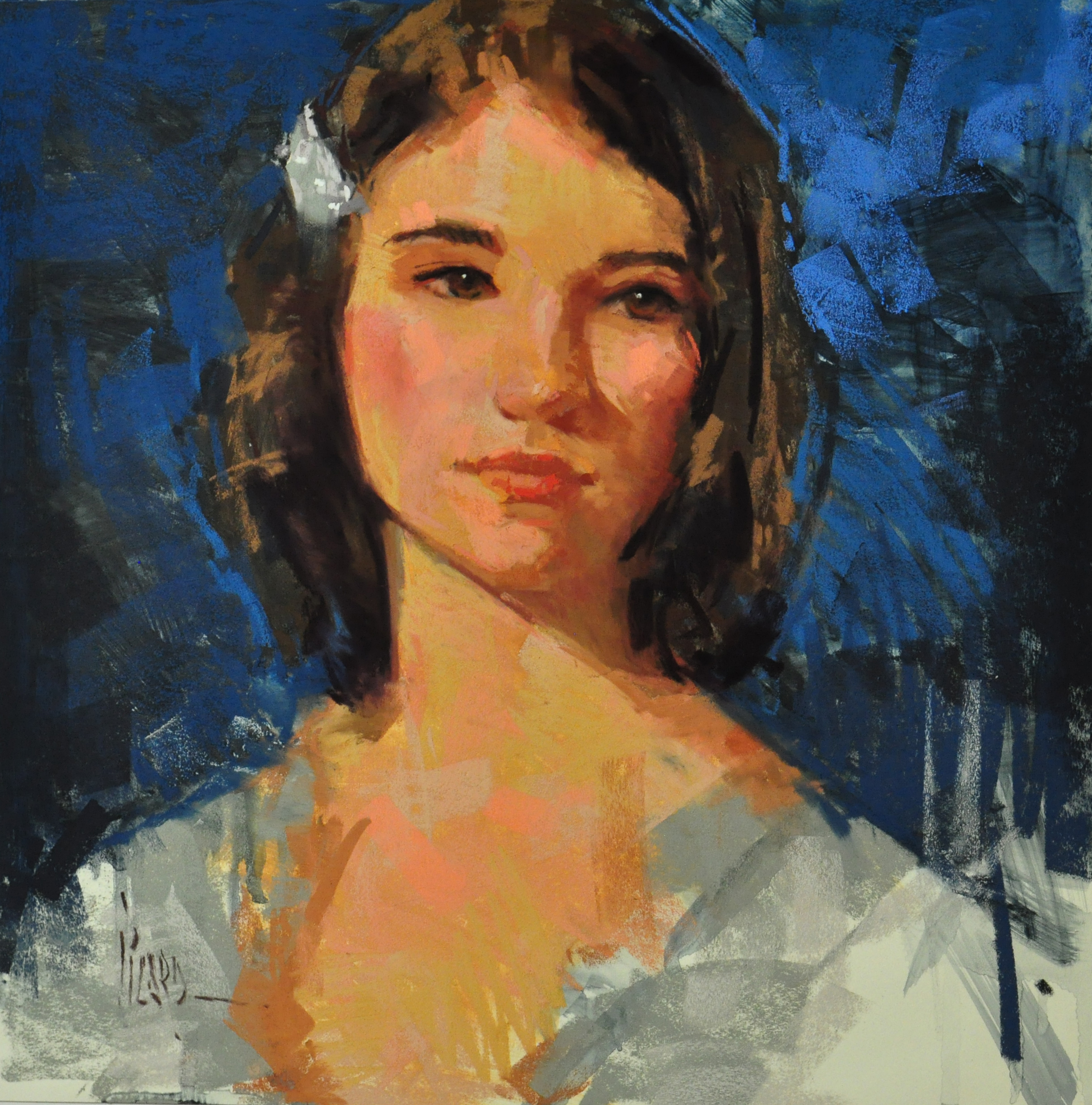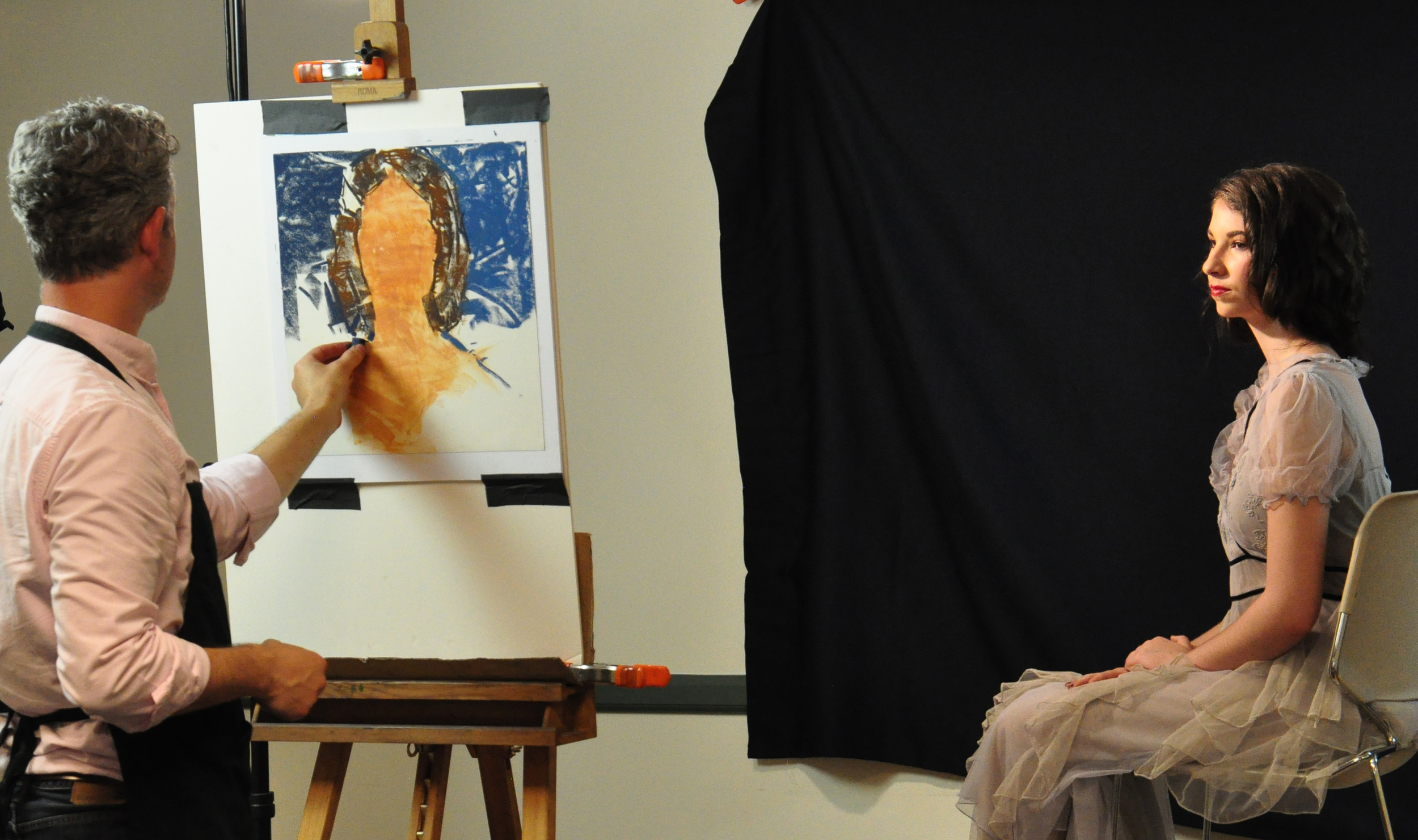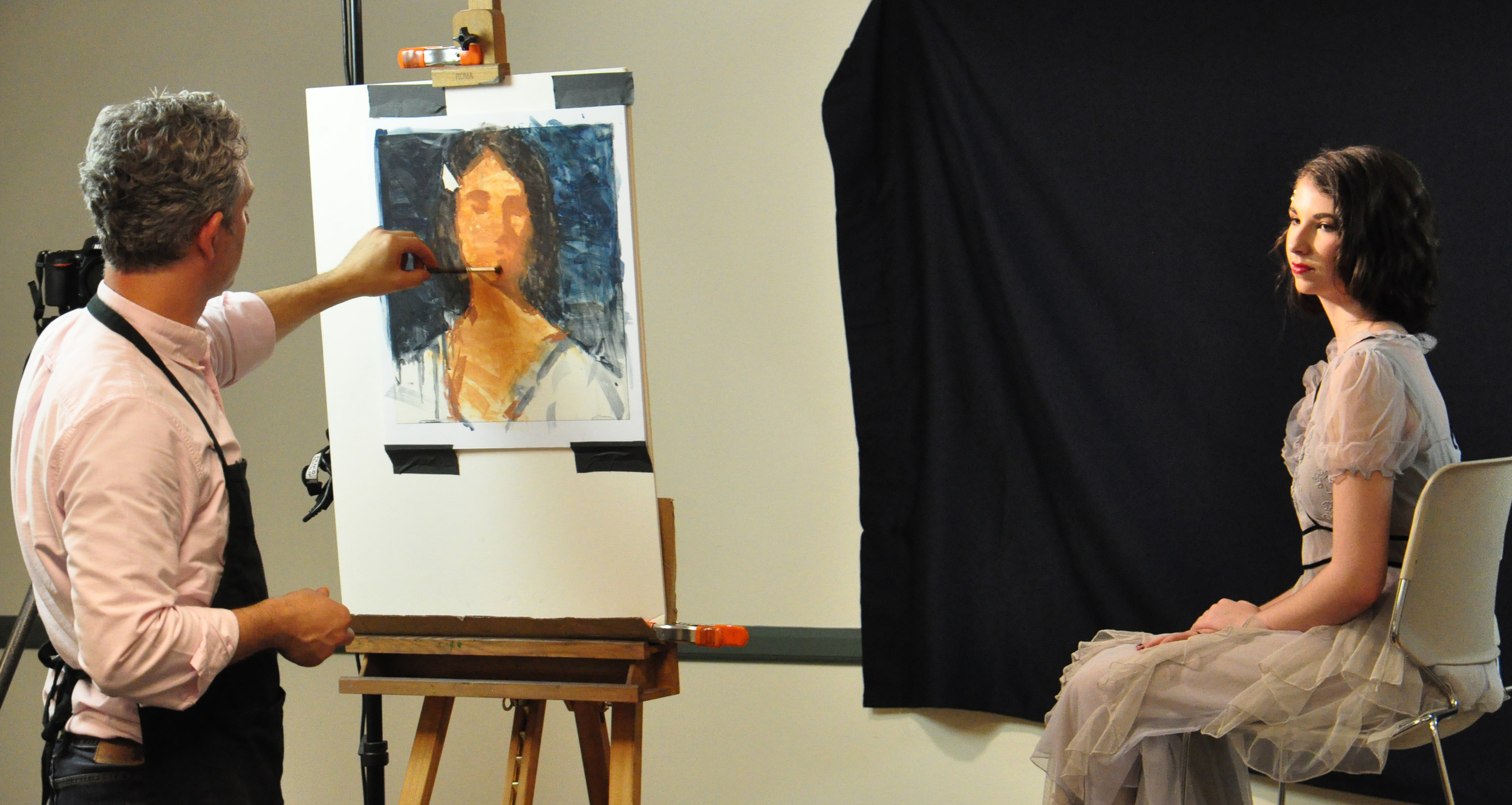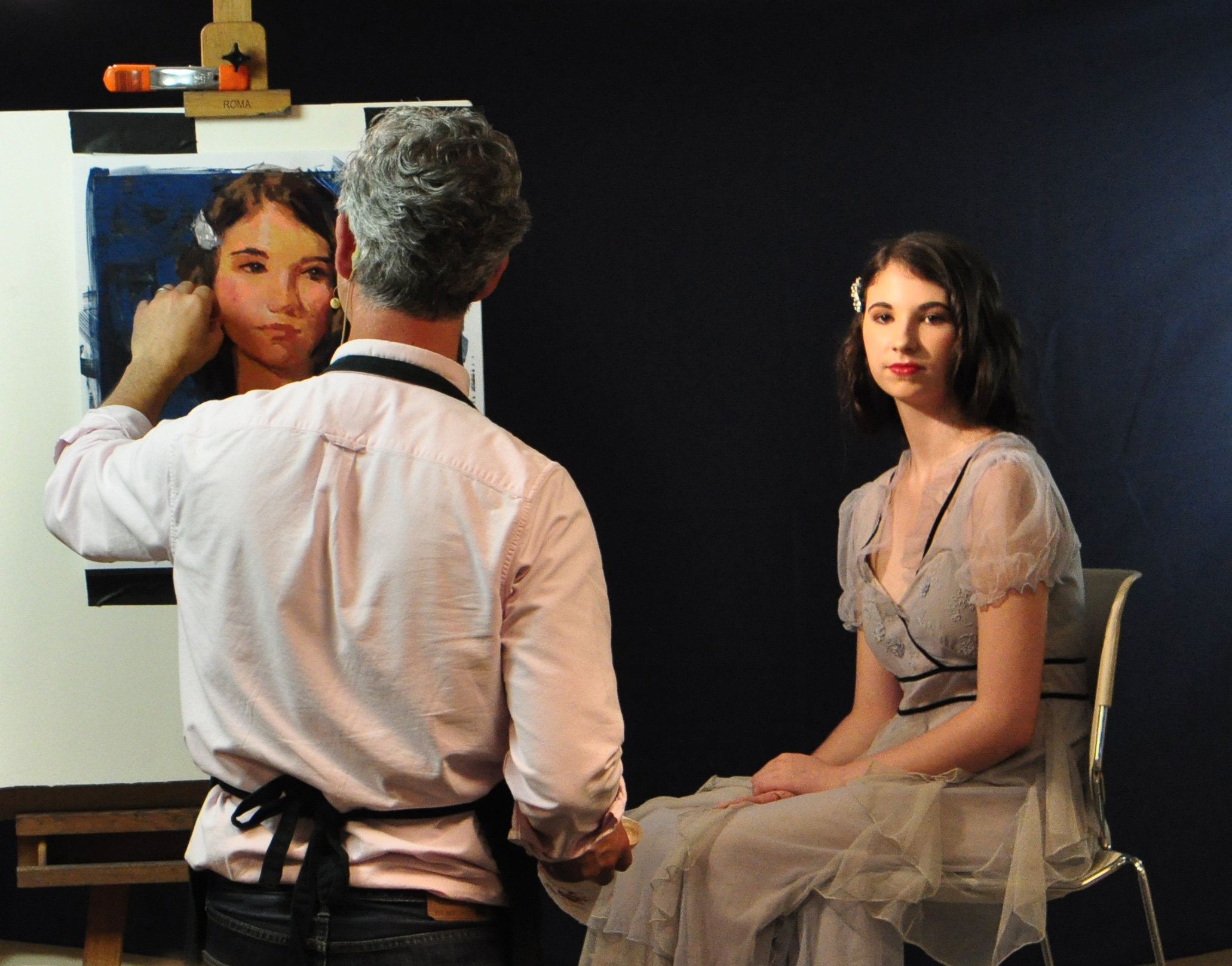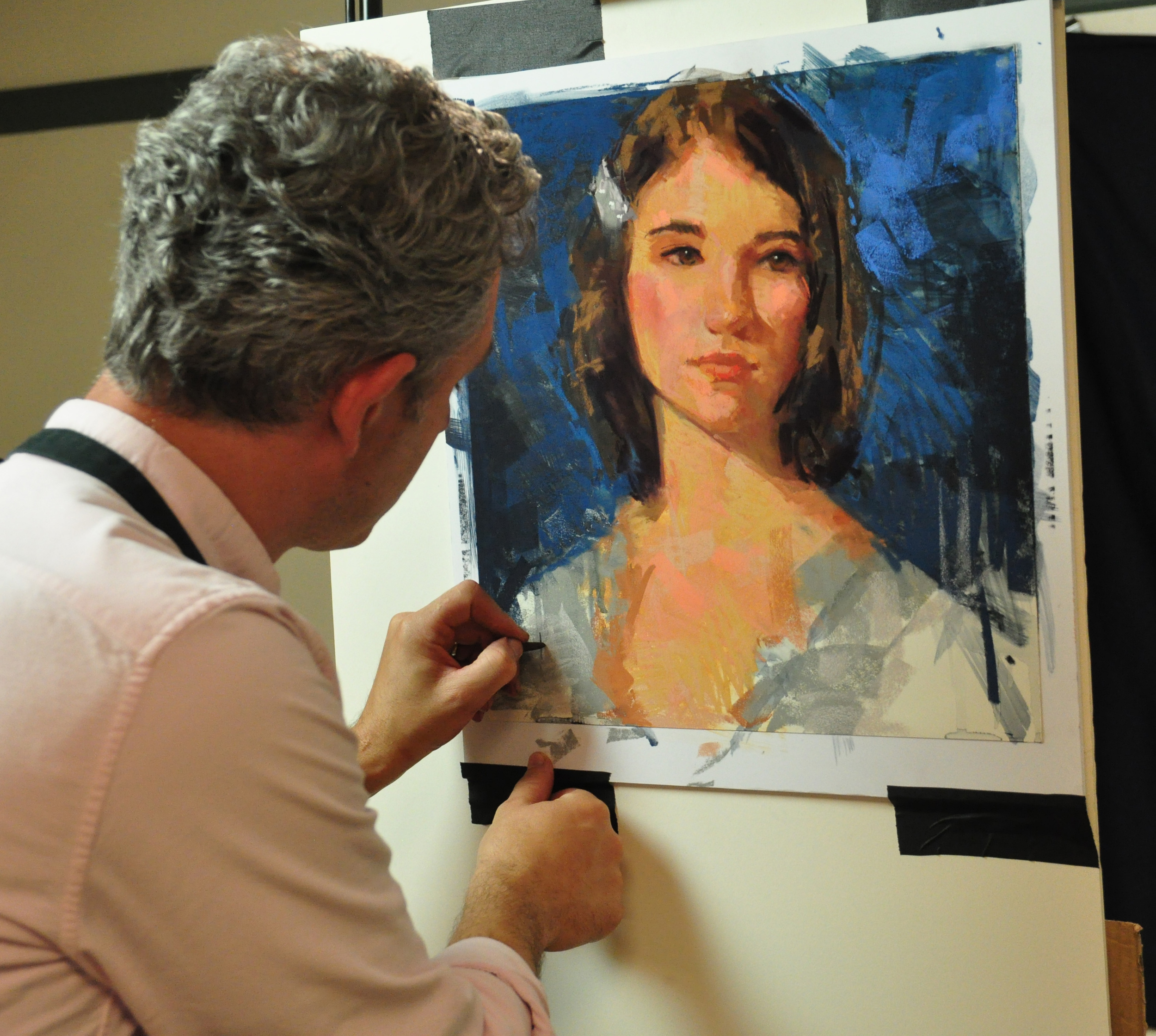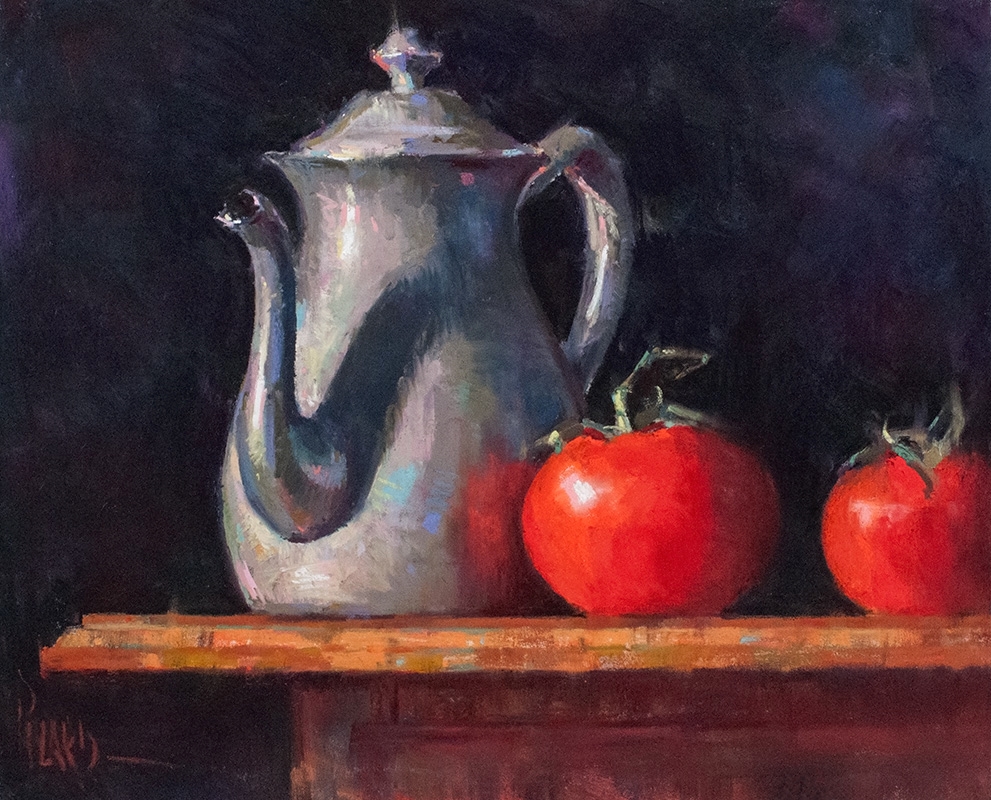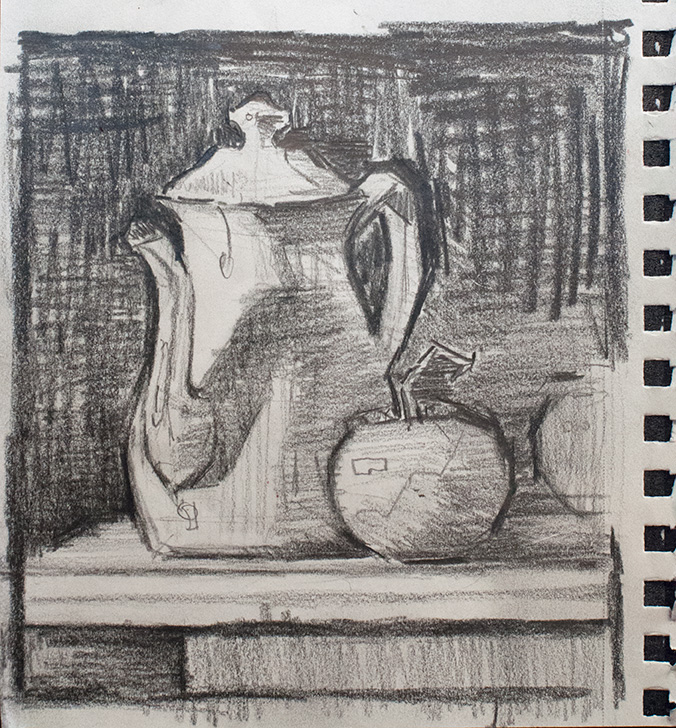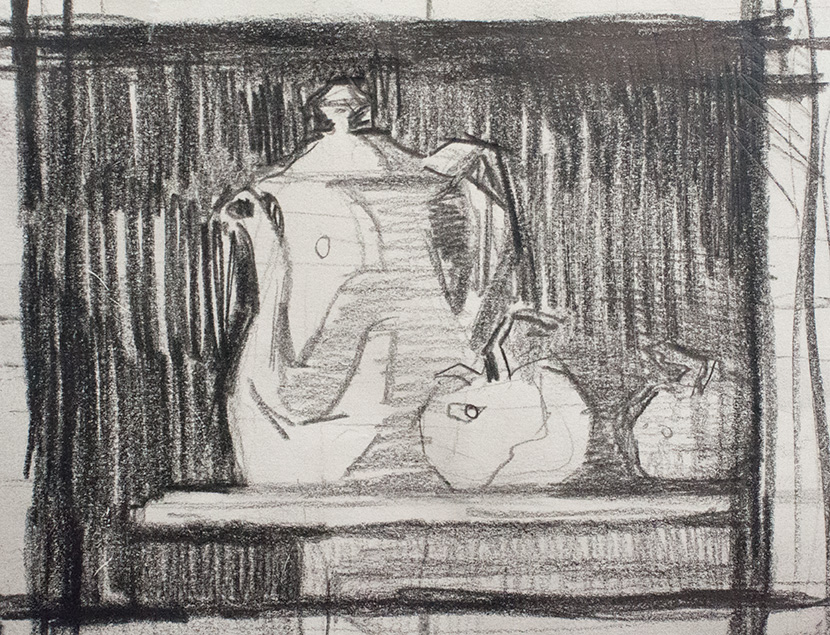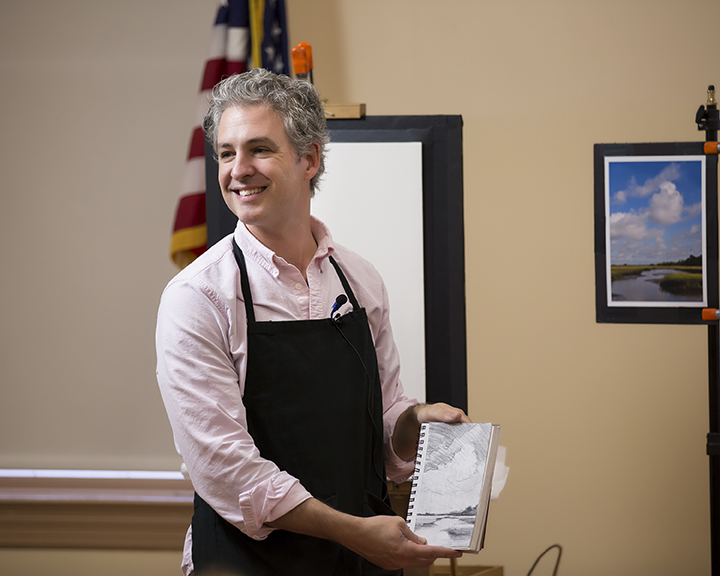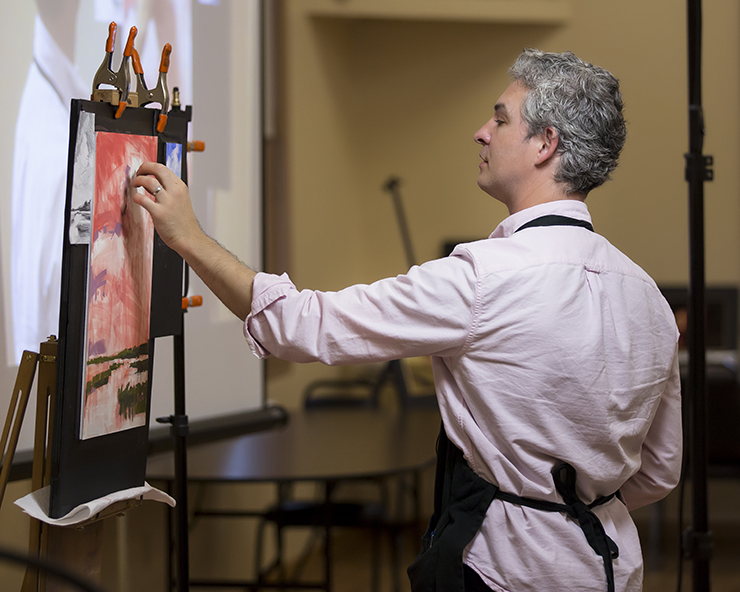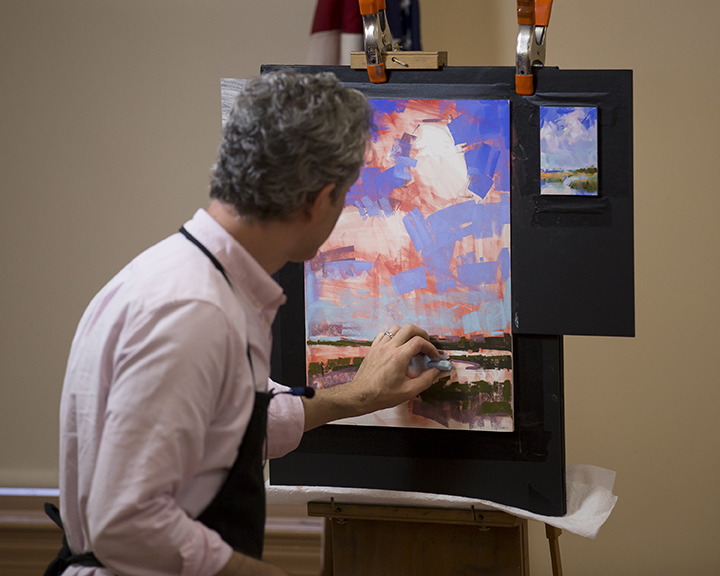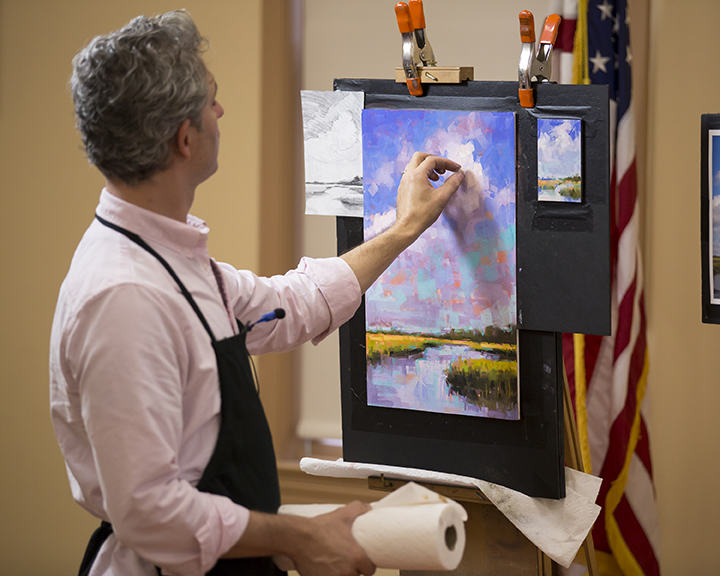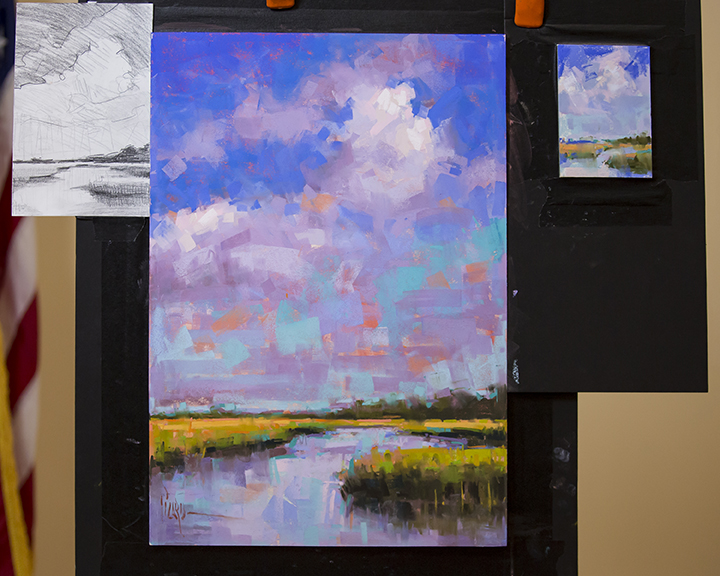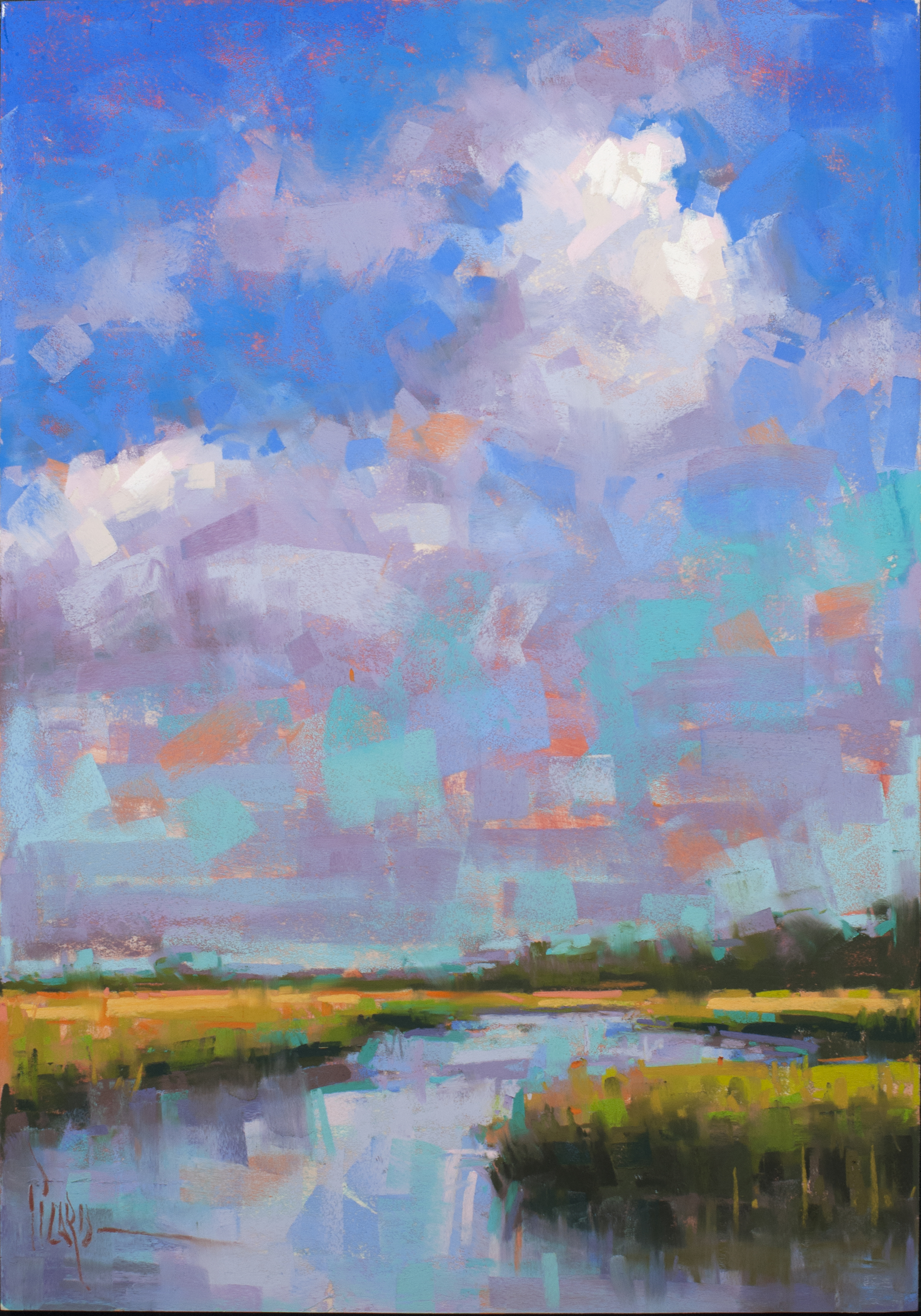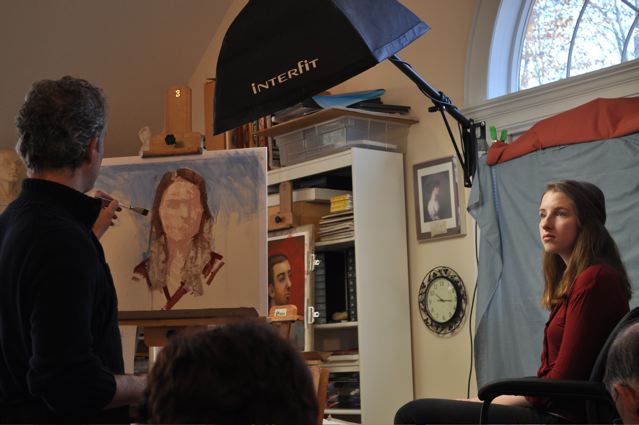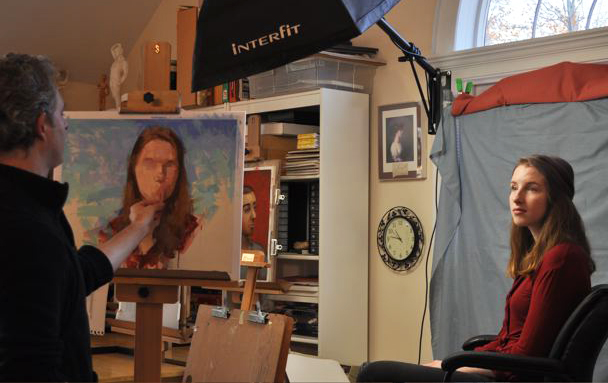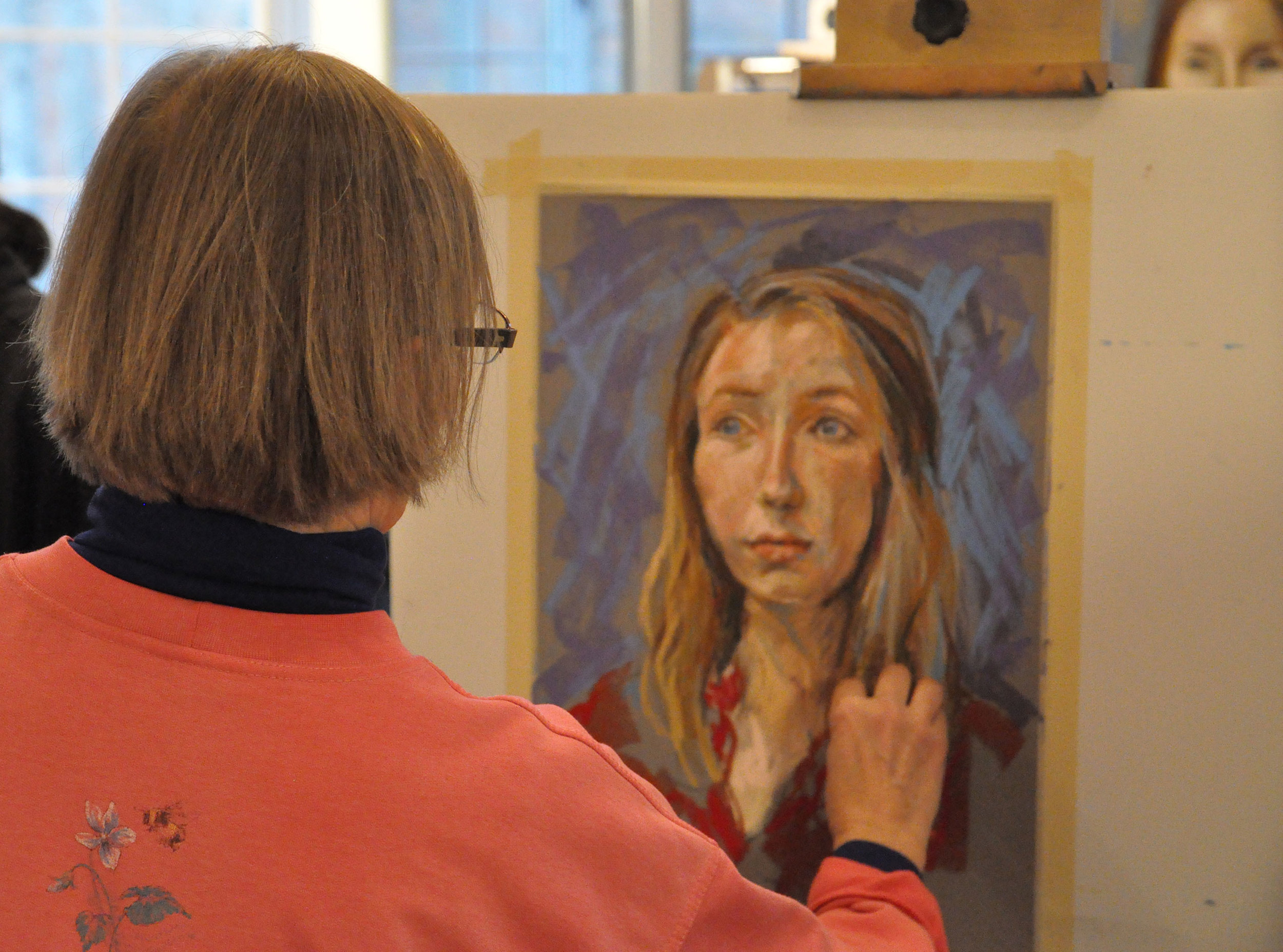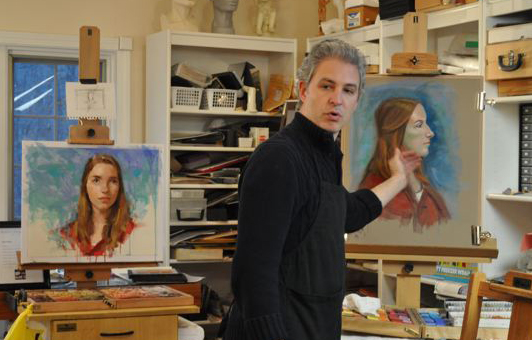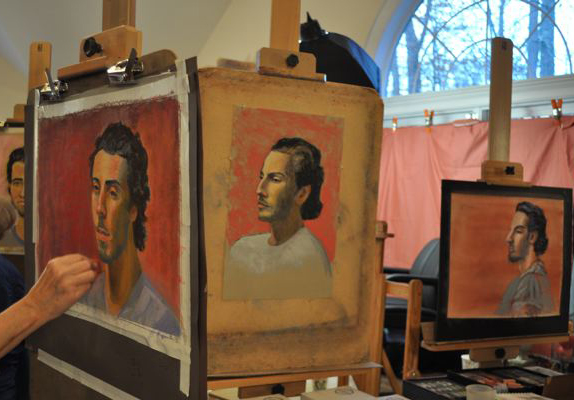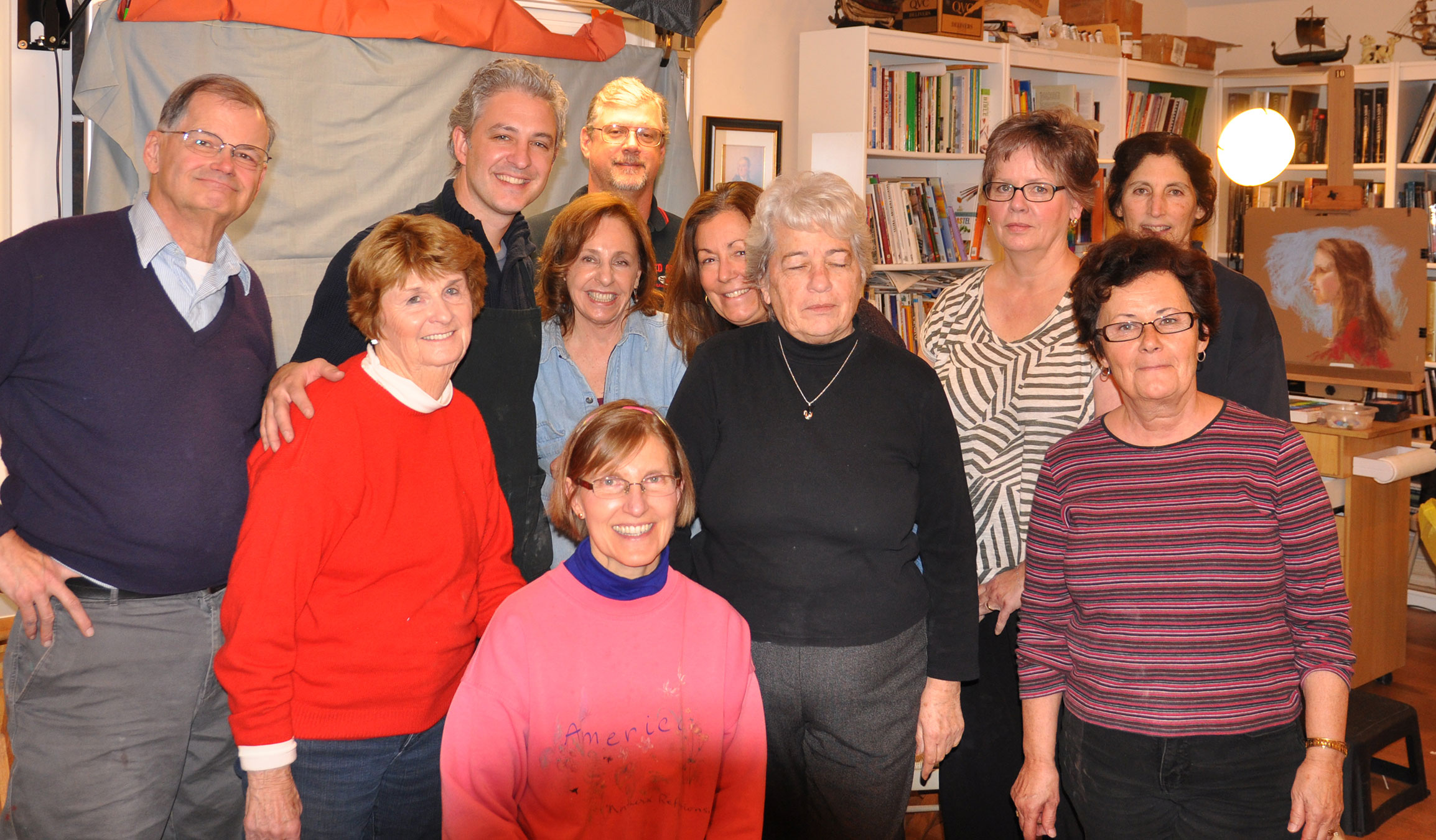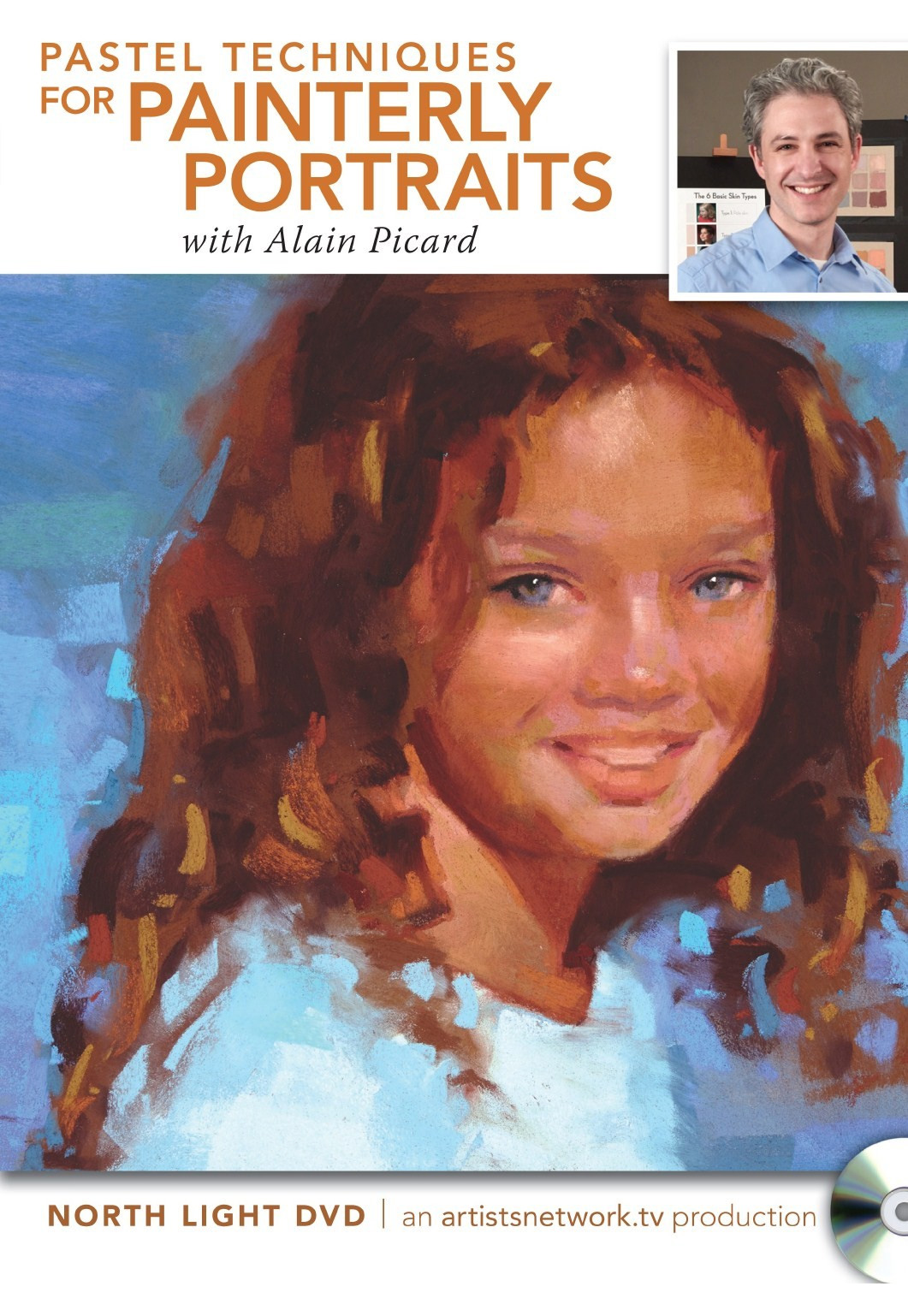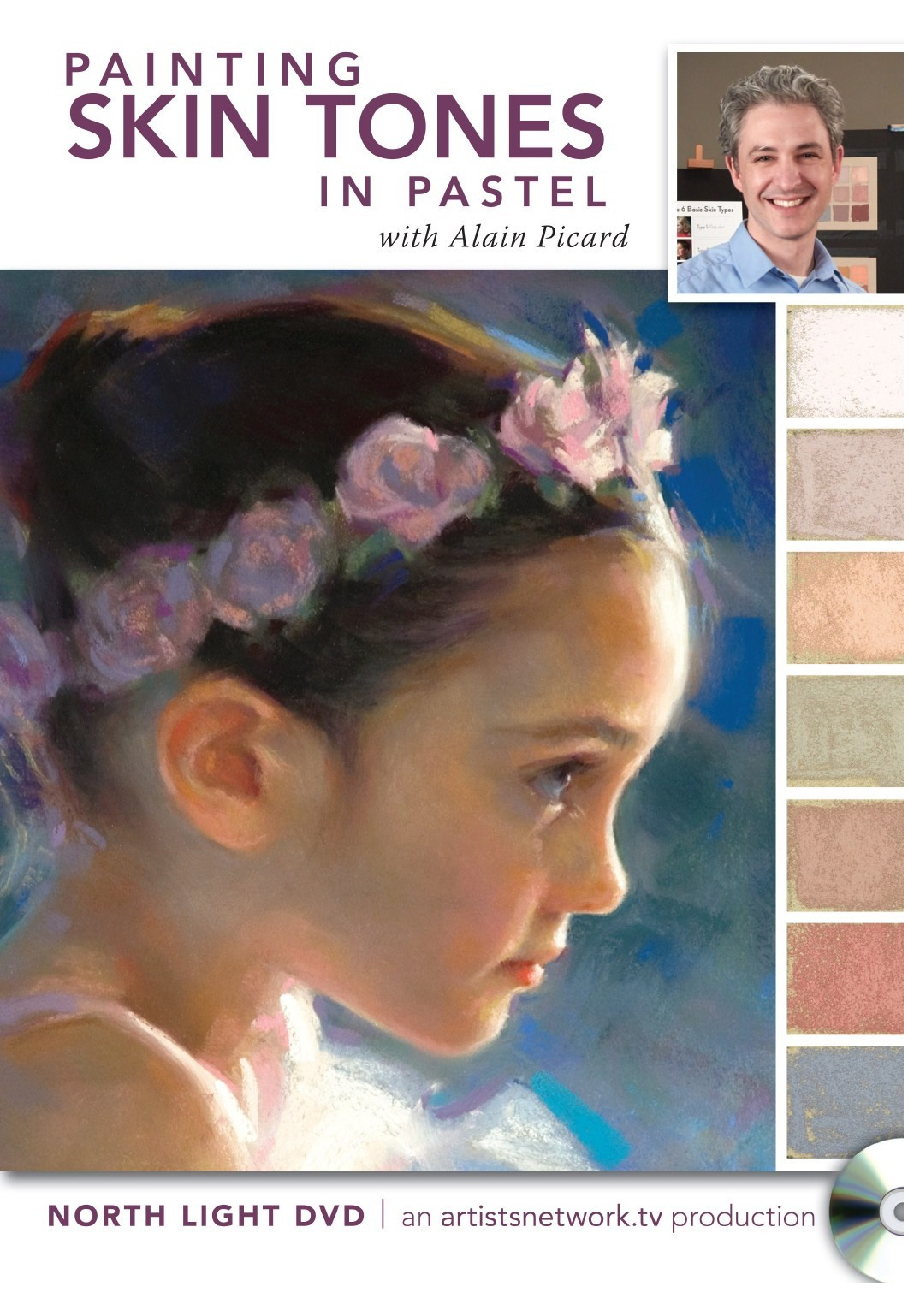IAPS Portrait Demonstration
Attending the IAPS Convention in Albuquerque, NM was a creative highlight of the year. I was invited to give a portrait demonstration entitled, "The Painterly Children's Portrait." Our model was 17, so we just made the cut there! I used an approach to painting this portrait that relies upon massing in the big simple shapes without any detail at the start, then progressing to the refinement of smaller shapes as the work develops. Here you can see the portrait at the first break, where I've washed in a basic skin tone color, and addressed all the major shapes of the painting. I've come to really enjoy using an underpainting with alcohol in my portrait work to keep things loose and simple at the start.
After about 90 minutes of work, I took a second picture of the portrait in progress. Here you can see that I've worked on anchoring the darks, developing the color relationships in the hair, shirt, and background, and beginning to address the smaller shapes of the facial area. This method of development can be known as, "pulling the portrait out of the fog".
Here is the final portrait study at the end of our three hour portrait demonstration (about 2.5 hours of painting time). I continued to develop the smaller details of the face, as well as addressing the overall color harmony and accents throughout the portrait. I gave special care not to overdevelop the shadow areas, keeping them simple and quiet. I had great fun building up the skin tone colors in the face and the painterly texture throughout, taking liberty with color. Enjoy!
"Portrait of Kathleen" Pastel on Wallis Museum Grade 18x14" Collection of John Philbin Dolan




